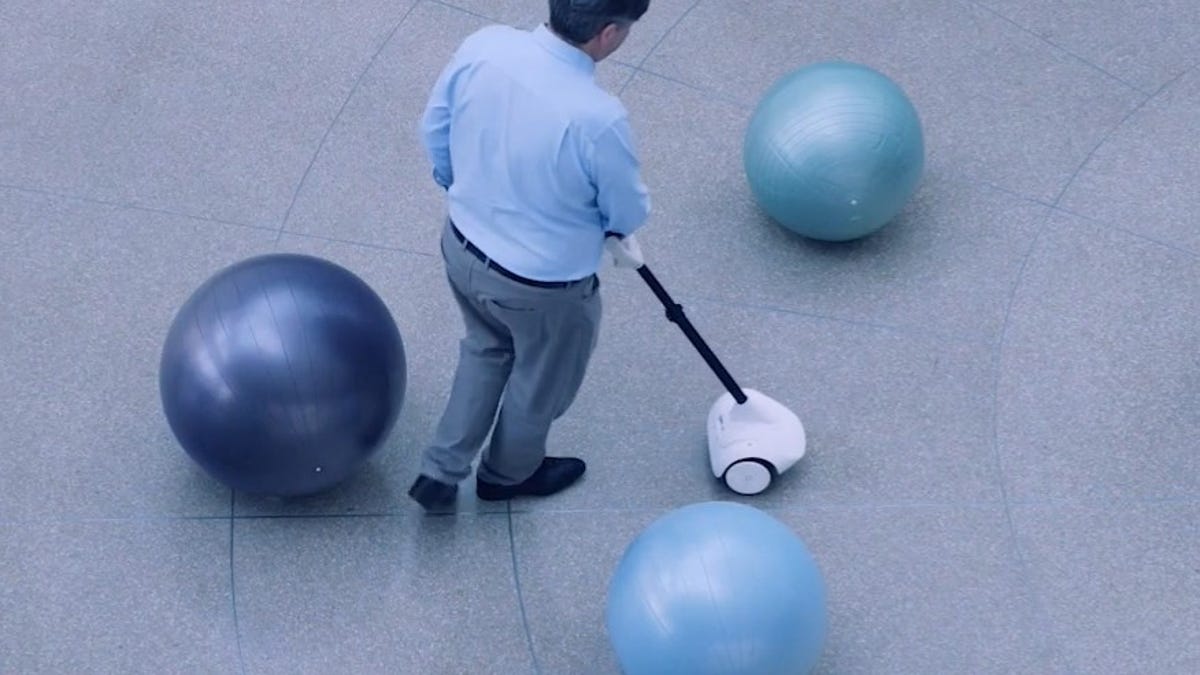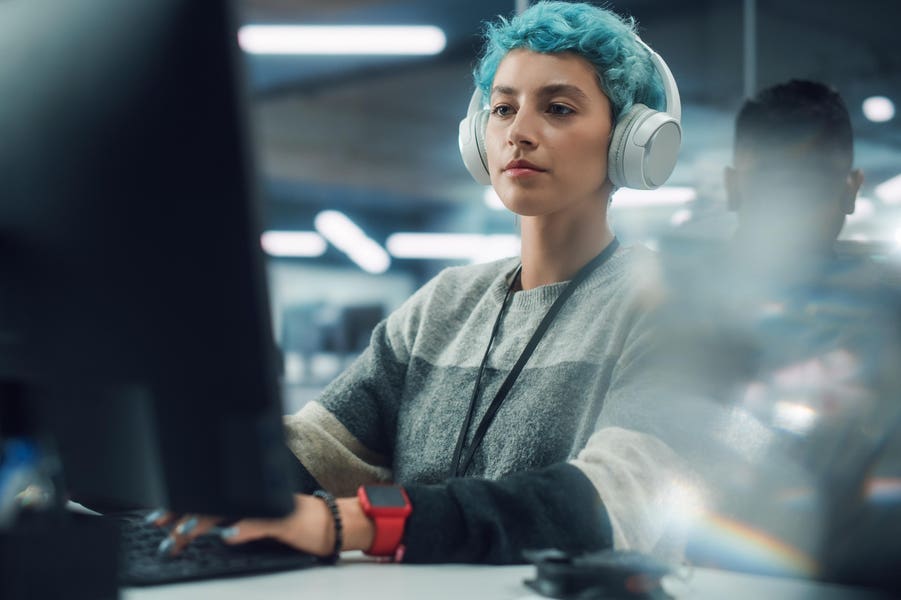When music icon Stevie Wonder, renowned for his blindness, test-drives a cutting-edge robotic device designed for the visually impaired at the Consumer Electronics Show in Las Vegas, it’s a significant moment. Clad in his trademark dark glasses, Wonder maneuvers what appears to be a compact robotic aid with substantial wheels, envisioning a potential game-changer in the realm of impaired vision assistance.
Although the ‘Glide’ robot’s outward appearance may seem rudimentary, its creator and innovator, Amos Miller, envisions a revolutionary impact on the lives of individuals grappling with visual challenges. The American Community Survey reports a staggering 547,083 children facing vision difficulties in the US in 2019, with countless others confronting blindness due to ailments like diabetes and glaucoma throughout their lifetimes.
Amos Miller’s personal journey into blindness, triggered by retinitis pigmentosa in his late twenties, abruptly altered his trajectory as he was on the cusp of a promising career in technology. Joining the ranks of approximately 7.6 million visually impaired individuals in the US, Miller found himself navigating a disorienting new reality where even mundane tasks demanded relearning from scratch.
Tasks as mundane as fetching a glass of milk from the fridge transformed into intricate processes fraught with challenges post-vision loss, as shared by Kim Tindall, another adult struck by blindness. Tindall’s experience mirrors Miller’s, emphasizing the arduous path of relearning fundamental activities. Both individuals had to embark on a journey of rediscovery, with Tindall seeking guidance at the Louisiana Center for the Blind (LCB).
Initially relying on traditional aids like canes and later transitioning to guide dogs, Miller gradually realized the inherent limitations of these methods in a tech-driven world. While guide dogs offer companionship and navigation assistance, their high costs and limited availability pose significant hurdles. The cane, a more affordable alternative, necessitates extensive training and demands a profound familiarity with surroundings for effective navigation.
Recognizing the inadequacies of existing solutions, Miller, drawing on his tech expertise, conceptualized the ‘Glide’ as a groundbreaking alternative. Sized at 9-by-9 inches, the Glide embodies a blend of sophistication and simplicity, eschewing motorized propulsion for passive kinetic guidance. This design choice not only ensures user control but also renders the device lightweight and easily maneuverable, even over stairs.
Equipped with cameras and sensors on its wheels, the Glide empowers users to navigate obstacles and regulate speed through a haptic handle featuring vibrotactile actuators. Integrating apps like Google Maps enhances navigation precision, offering a seamless path to destinations and revolutionizing in-store shopping experiences for the visually impaired.
As Glidance fine-tunes pricing details for the Glide, positioning it akin to mobile phone subscription plans, the product’s indoor optimization sets the stage for future adaptations catering to complex environments and outdoor usage. With a beta version slated for imminent release, the Glide holds promise as a transformative tool, particularly amidst the projected rise in age-related vision loss cases in the coming decades.










